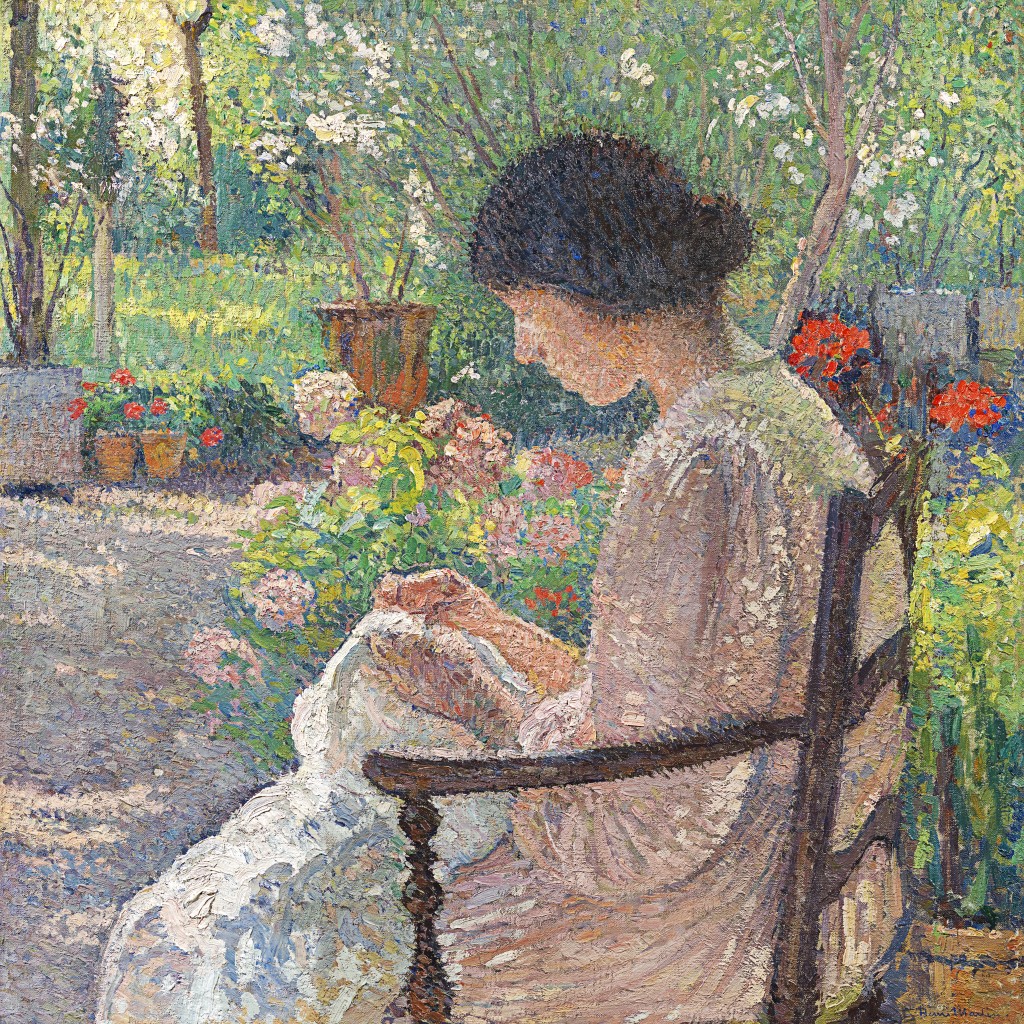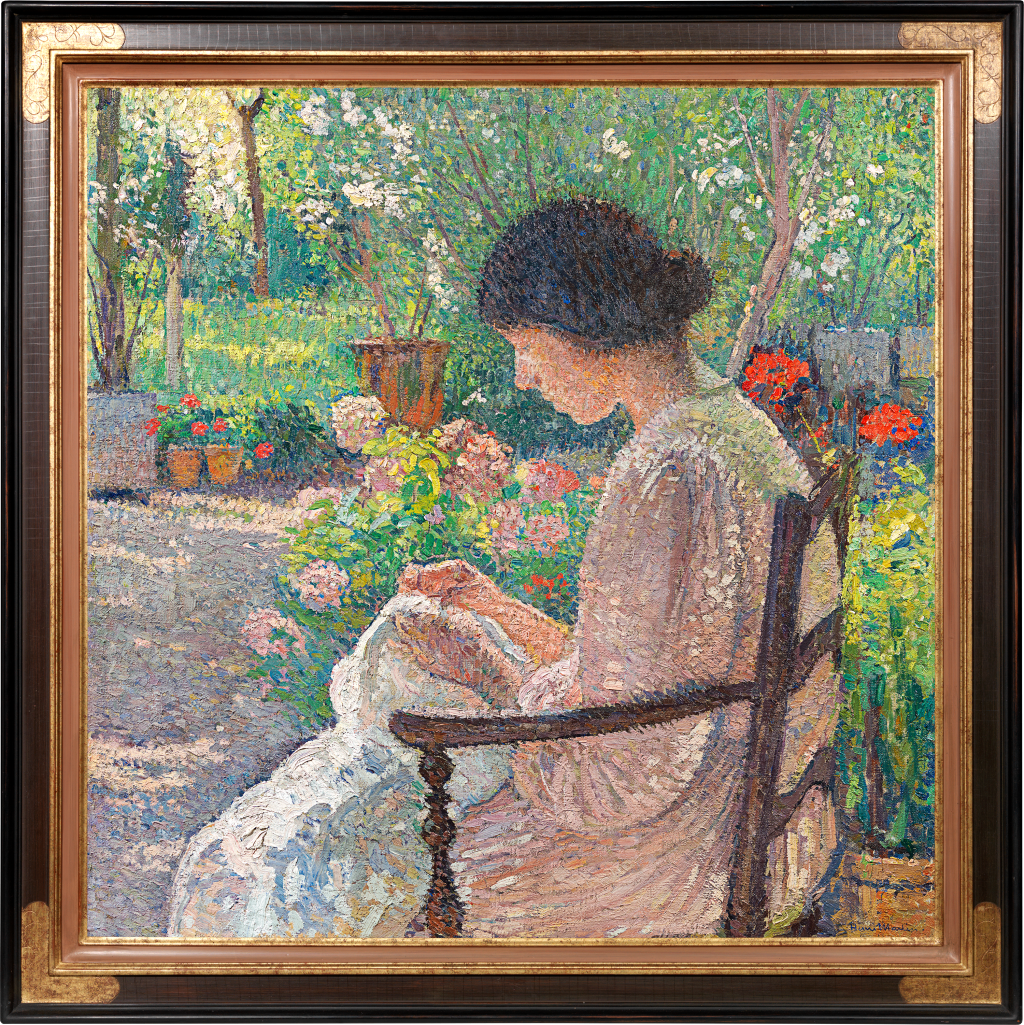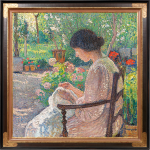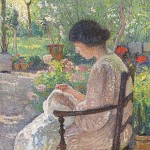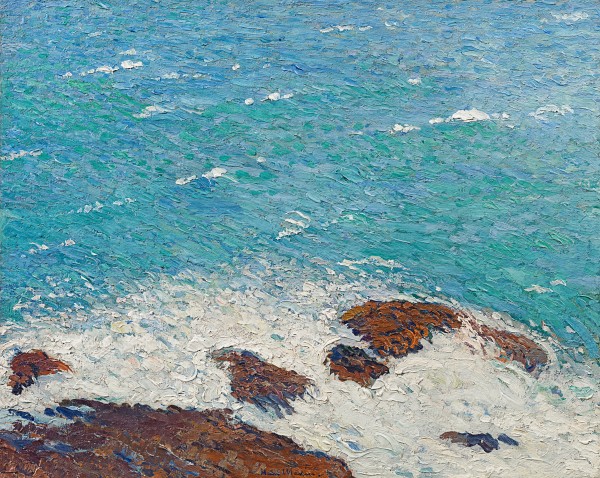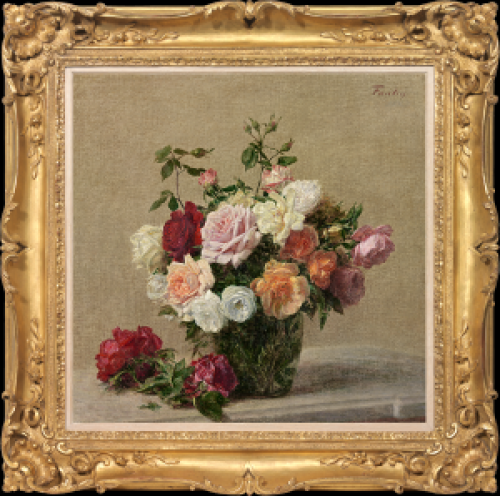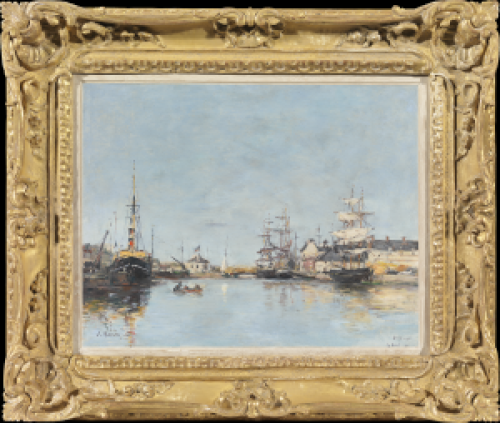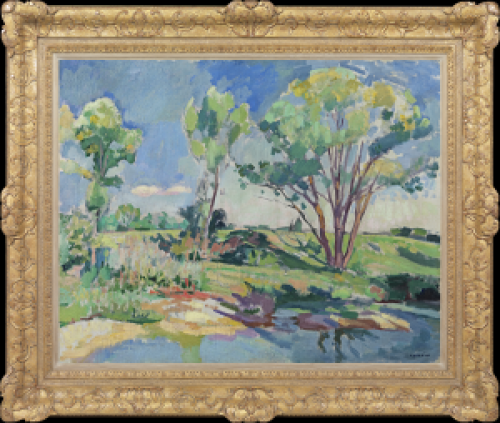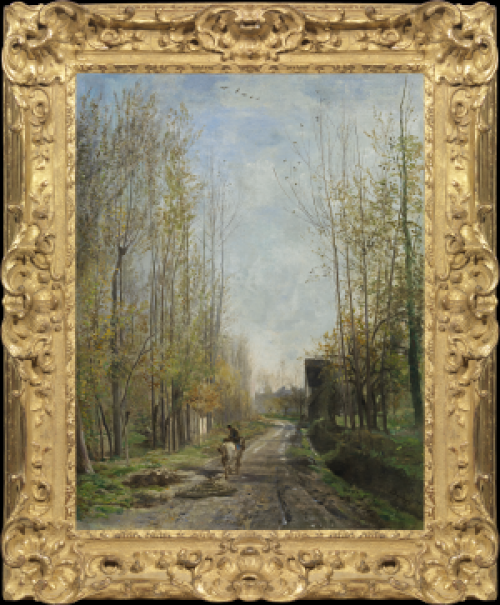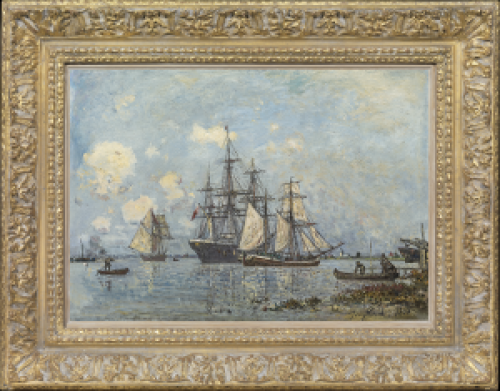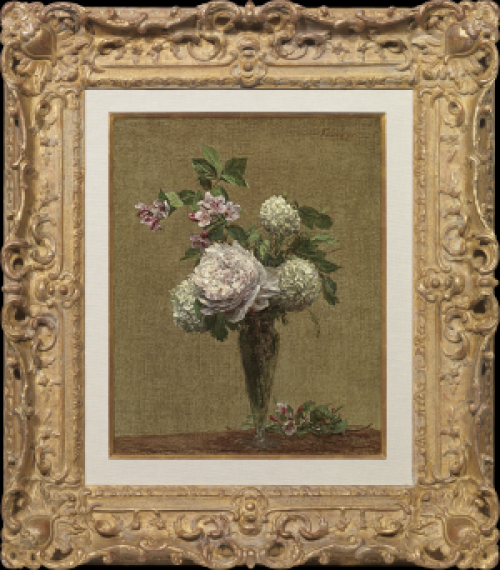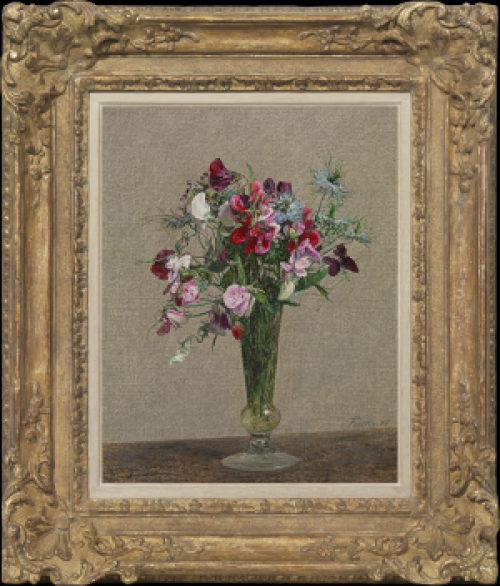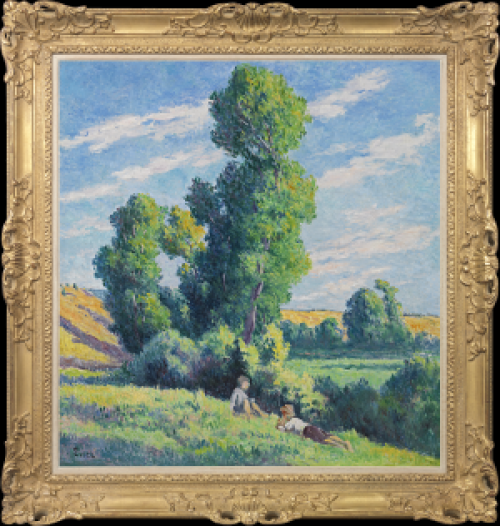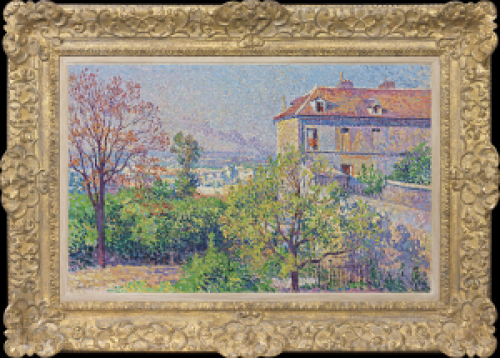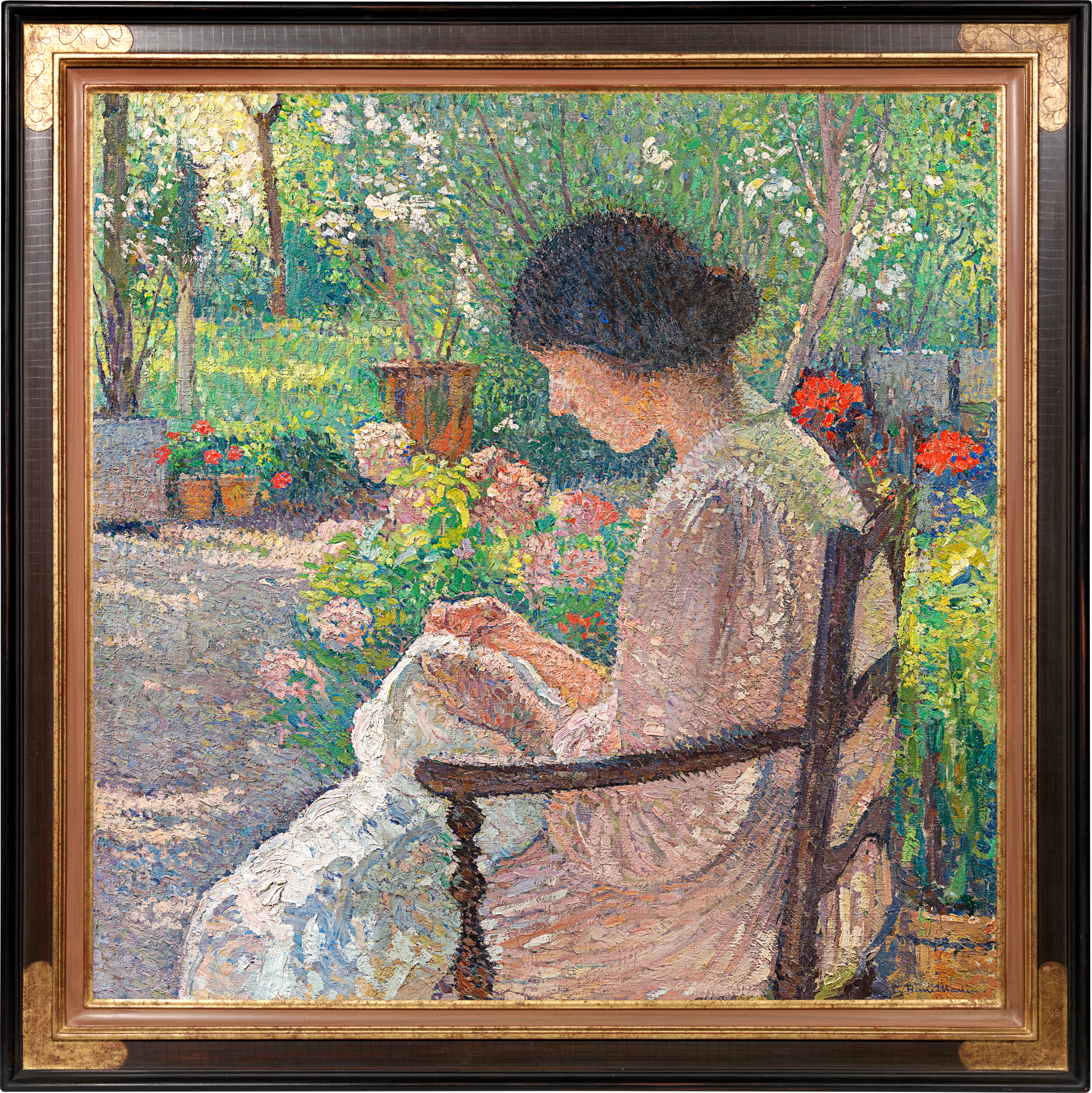HENRI MARTIN
Toulouse 1860 - 1943 Labastide-du-Vert
Ref: CC 183
Lisette cousant dans le jardin de Marquayrol
Signed lower right: Henri Martin
Oil on canvas: 32 ¼ x 32 ¼ in / 81.9 x 81.9 cm
Frame size: 40 ½ x 40 ½ in / 102.9 x 102.9 cm
In a Louis XIV style carved and gilded frame
Painted circa 1913
Provenance:
Acquired directly from the artist by a private collector, France;
by family descent circa 2019 to a private collector, France
To be included in the forthcoming catalogue raisonné of the work of Henri Martin being prepared by Marie-Anne Destrebecq-Martin
Henri Martin was a Southerner, born in Toulouse, of Italian descent on his mother’s side. From 1900 he spent every spring and summer at the seventeenth century manor of Marquayrol near Labastide-du-Vert in the Lot Valley, finding inspiration in its gentle green landscape and medieval villages. The environs of his house and a tranquil domestic life provided endless motifs for his art. This painting depicts Lisette, a beloved family servant, sewing in the garden at Marquayrol. Martin explores the complex play of sunlight filtered by trees and the myriad hues produced by shadows on the white cloth and Lisette’s pink dress. A band of vivid colour is provided by the geraniums across the upper third of the work.
In 1885 Martin had been awarded a scholarship to study in Italy, where he was greatly moved by the work of Florentine painters including Giotto and Masaccio. Lisette’s simple profile and shimmering, pastel figure, as well as her air of intense concentration, owe something to the purity of the early Renaissance Italian masters. He was also impressed by the paintings of the contemporary Italian school, the Macchiaioli, where artists such as Giovanni Segantini (1858-1899) adopted a modified form of Divisionism to explore light effects. These elements, along with Impressionism and Post-Impressionism, fed into Martin’s mature style.
Martin modifies his brushwork, employing tight touches of colour for the distant landscape and the contours of Lisette’s face, while the cascade of cloth on her lap and the skirt of her dress are evoked in longer, blended strokes. The dark wood of her chair barring the foreground enhances the impression that she is protected in her rapt concentration on her timeless domestic occupation. Like Camille Pissarro (1830-1903), Martin saw beauty and dignity in the repeated tasks of ordinary life, giving the composition its air of serene spirituality.
The same year that this painting was made, 1913, Martin included the figure of Lisette in a larger, more complex composition, Les tricoteuses or La pergola (Musée des Arts de Nantes). Lisette is shown in a similar pose, knitting in a green chair under the pergola at Marquarol. She is accompanied by a woman on the left, sewing, and a young woman with a baby. Again, the sense is of timeless domestic harmony in the Lot Valley paradise that Martin had made his own.
Henri Martin, Les tricoteuses or La pergola, 1913.
Musée des Arts de Nantes.
HENRI MARTIN
Toulouse 1860 - 1943 Labastide-du-Vert
Henri Martin moved to Paris in 1879 from his home town of Toulouse. A scholarship enabled him to study in the studio of Jean-Paul Laurens and in 1883, at the age of twenty-three, he gained his first medal at the Paris Salon.
In 1885 Martin was awarded a scholarship by the Salon to study in Italy, a journey that was to have a profound effect upon his artistic development. Until this period he had favoured literary, historical and Biblical subjects painted in a precise, academic technique, but the Italian light and his study of masters such as Giotto and Masaccio gave him a new perspective.
Martin returned to Paris in 1889. Influenced by the Neo-Impressionists, Martin used the Divisionist technique to give his work an ethereal quality; he abandoned the academic style of his earlier works and in 1889 submitted a canvas to the Salon that was wholly Pointillist. During the next decade, impressed by the work of the Symbolists, Martin peopled his landscape with shimmering allegorical figures and floating muses. Puvis de Chavannes said of him: ‘Celui-ça sera mon héritier, il continuera’. However, from 1900 Martin appears to have detached himself from the Symbolists and allowed his admiration for the Impressionists to influence his work to a greater extent.
Martin was a talented painter of large-scale decorative commissions, including the murals for the Hôtel de Ville in Paris (1895-6), which combine figures of Apollo and the Muses with official portraits in dreamlike landscapes that blend Pointillist brushwork and academic drawing. Later murals, such as Mowers for the Toulouse Capitole, employ allegory only within the context of the celebration of nature and the rhythm of agricultural life.
A shy, quiet character, Henri Martin remained independent, refusing to be contracted to one particular Parisian dealer, despite the success garnered by many of his contemporaries by such arrangements. In 1900 he bought Marquayrol, an old manor house near Labastide-du-Vert in the Lot Valley. The house, his family and the beautiful landscape provided him with inspiration for the rest of his life. Martin sought to convey the colours and textures of the changing seasons and the ancient rhythm of the agricultural world. These canvases are considered to be amongst his most successful works. Henri Martin died at Marquayrol in 1943.
The work of Henri Martini is represented in the Musée d’Orsay, the Musée des Arts Décoratifs, the Hôtel de Ville and the Conseil d’Etat, Paris; the Musée des Beaux-Arts, Bordeaux; the Capitole and the Musée Augustins, Toulouse, and the Museum of Fine Arts, Montreal.


